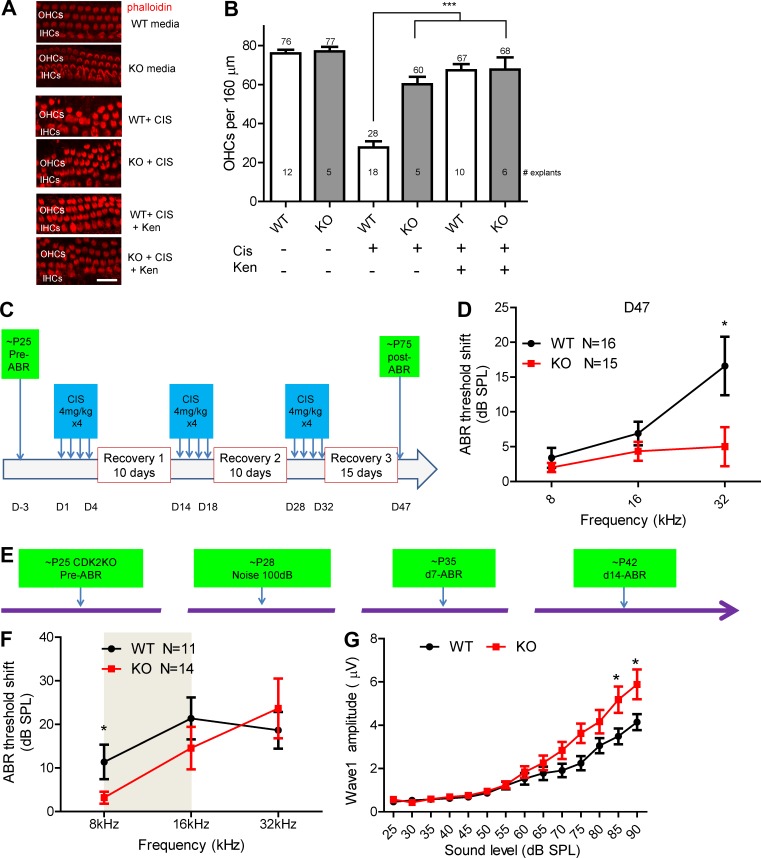Figure 5.
Germline CDK2 KO cochlear explants exhibit resistance to cisplatin (CIS) treatment, and kenpaullone (ken) administration phenocopies CDK2 KO exhibit resistance to CIS ototoxicity. All analysis here was double blinded. (A) Middle turn organs of Corti showing actin staining (with phalloidin) in CDK2 WT and KO cochleae with no treatment, with 50 µM CIS treatment, and with 50 µM CIS and 5 µM ken treatment. Bar, 20 µm. (B) The numbers of actin-labeled OHCs per 160 µm of the middle turn cochleae were counted. The numbers of explants tested in each condition are indicated in the bars. ***, P < 0.001 by one-way ANOVA with Bonferroni’s multiple comparison test. (C) Experimental design: CDK2 KO and WT littermate mice were treated for 47 d with three rounds of treatment, each consisting of daily i.p. injections of 4 mg/kg cisplatin for 4 d followed by recovery for 10–15 d. (D) ABR threshold shifts at D47. *, P < 0.05 by unpaired two-tailed Student’s t test. Note that 11.6 dB was detected between WT and CDK2 KO mice at 32 kHz. (E) Experimental design: CDK2 KO mice at P28 were exposed to noise (8–16 kHz at 100 dB for 2 h), and ABR thresholds were recorded before and at D7 and D14 after noise exposure. Cochlear histology was examined at D14. (F) Comparison of ABR threshold shifts at D14 in control mice (black) and CDK2 KO mice. The gray area indicates the noise octave bandwidth between 8 and 16 kHz. (G) Comparison of ABR wave 1 amplitudes at 8 kHz at D14 in WT and CDK2 KO mice. *, P < 0.05 by unpaired two-tailed Student’s t test. Error bars represent SEM.

